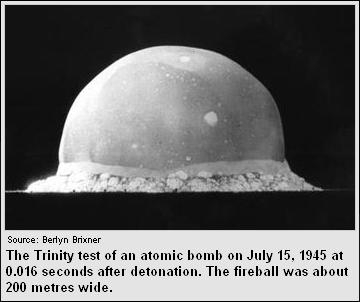Scality Ring at Los Alamos National Laboratory
At scale will eventually store 200PB to 500PB.
This is a Press Release edited by StorageNewsletter.com on July 1, 2014 at 2:41 pmLos Alamos National Laboratory (LANL), one of America’s premier research centers, has selected Scality’s SDS RING as an active archive for complex simulations used to monitor the health of the US nuclear stockpile.
Los Alamos National Laboratory, a multidisciplinary research institution engaged in strategic science on behalf of national security, is operated by Los Alamos National Security, LLC, a team composed of Bechtel National, Inc., the University of California, The Babcock & Wilcox company, and URS for the Department of Energy’s National Nuclear Security Administration.
Los Alamos has the responsibility for ensuring the safety of the US nuclear arsenal. International test ban treaties have replaced physical device tests with complex computer simulations. LANL’s simulations are used to test the arsenal’s physical condition and operational readiness. Aging weapons, some of which are thirty to forty years old, require advanced modelling based on their unique physical properties and maintenance histories. Supercomputer-based simulations can run for many months and each exploration generates many petabytes. Evaluating different scenarios can require restarting a simulation from a specific checkpoint several months back into the simulation. Archiving results at different checkpoints is critical to the simulation process.
Maintaining an active archive of test results requires storing tens of petabytes on hundreds of thousands of physical disks for each simulation. LANL required a SDS strategy that could ensure cost-effective data protection using erasure coding, provide unified block, file and object storage be easy to deploy and manage at scale and employ commodity, consumer-grade disk as the primary storage medium. At scale, the Scality archive will eventually store 200PB to 500PB of data.
These requirements, together with the need for software only, solution-enabling competitive commodity hardware to be utilized led to the acquisition of the RING for this mission-critical program.
“We selected Scality because the RING satisfied our requirements for a software only, software-defined storage solution, leveraging competitive commodity hardware; providing scalability; multiple storage interfaces, including block, object, HDFS, and file; erasure-coding-based data protection; and ease of storage deployment,” said Gary Grider, division leader for HPC, Los Alamos.
“The LANL team calls this tier of the HPC storage hierarchy, ‘Campaign Storage,’ as it is used to keep a significant portion of a scientific campaign’s data online for many months to enable efficient weapons science to be accomplished,” said Kyle Lamb, one of the lead infrastructure architects, LANL.
“We developed Scality’s scale-out architecture precisely to support the most demanding workloads,” said Jérôme Lecat, CEO, Scality. “The work at LANL is ground breaking in its scope and scale. We are pleased to collaborate with LANL in developing and deploying a solution that is mission-critical for US national defense.“














 Subscribe to our free daily newsletter
Subscribe to our free daily newsletter

